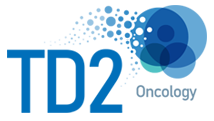Advancing Immunology Research with TD2’s GvHD Mouse Models
Graft-versus-host disease (GvHD) poses a unique challenge in immunology, emerging as a complication of bone marrow and stem cell transplants where donor immune cells attack recipient tissues. This intricate condition serves as a critical model to study immune regulation, inflammation, and tissue repair. TD2’s GvHD mouse models are meticulously designed to replicate these immunological phenomena, providing researchers with a powerful platform to understand immune dysfunction and develop targeted interventions. From revealing cytokine pathways to exploring therapeutic immune modulation, these models enable groundbreaking discoveries in immunology research.
Features & Benefits for Immunology Research
- Modeling Key Immune Dysfunctions
TD2’s GvHD mouse models capture essential immunological processes, such as T-cell activation, cytokine storms, and immune-mediated tissue damage. These models provide unparalleled opportunities to study immune system dysregulation in a controlled environment. - Customizable to Immune Mechanisms
Tailor experimental designs to explore specific immune pathways, including T-cell signaling, macrophage activation, and B-cell dysregulation. These options ensure that your research is aligned with the nuances of immune system function and therapeutic goals. - Insights into Cytokine and Chemokine Networks
Investigate the role of cytokines like IL-17, TNF-α, and TGF-β in driving GvHD. Our models are ideal for studying the delicate balance of pro-inflammatory and anti-inflammatory signals, aiding in the discovery of novel immune-modulating therapies. - Enabling Precision in Immune Therapeutics
Assess the efficacy of cutting-edge immunotherapies, including monoclonal antibodies, JAK inhibitors, and T-cell modulators. These studies offer actionable data to refine immune-targeted treatments and improve patient outcomes. - Integration with Advanced Immunology Tools
Leverage technologies like flow cytometry, multiplex cytokine assays, and immune cell phenotyping to gain high-resolution insights into immune dynamics. These tools enable researchers to dissect complex immune responses with precision.
Request more information about our GvHD Mouse Models
Contact our experts to help advance your drug development with TD2's Comprehensive Oncology Ecosystem.
TD2 GvHD Mouse Models for Immunology Research
- TBI (Total Body Irradiation) Model
Explores immune system recovery and dysfunction in the context of acute and chronic GvHD, highlighting the roles of donor and host immune cells interaction. This model can be used for understanding the mechanism of action of GvHD and methods to prevent or treat it. - Cyclophosphamide-Induced Model
Focuses on immune suppression and reconstitution, serving as a platform to study therapies targeting immune system recovery and inflammation control. - Scleroderma Model
Is a model of systemic sclerosis (SSc) that mimics the main characteristics of the disease. Represents chronic GvHD with features like fibrosis and chronic inflammation of the skin, ideal for studying long-term immune-driven tissue remodeling. - Customizable Humanized GvHD Models
Incorporates human immune cells, enabling translational research on human-specific immune mechanisms and treatments. - Combination Therapy Models
Allows for testing multi-targeted immunotherapies, such as combinations of checkpoint inhibitors and cytokine blockers, for robust immune system modulation.
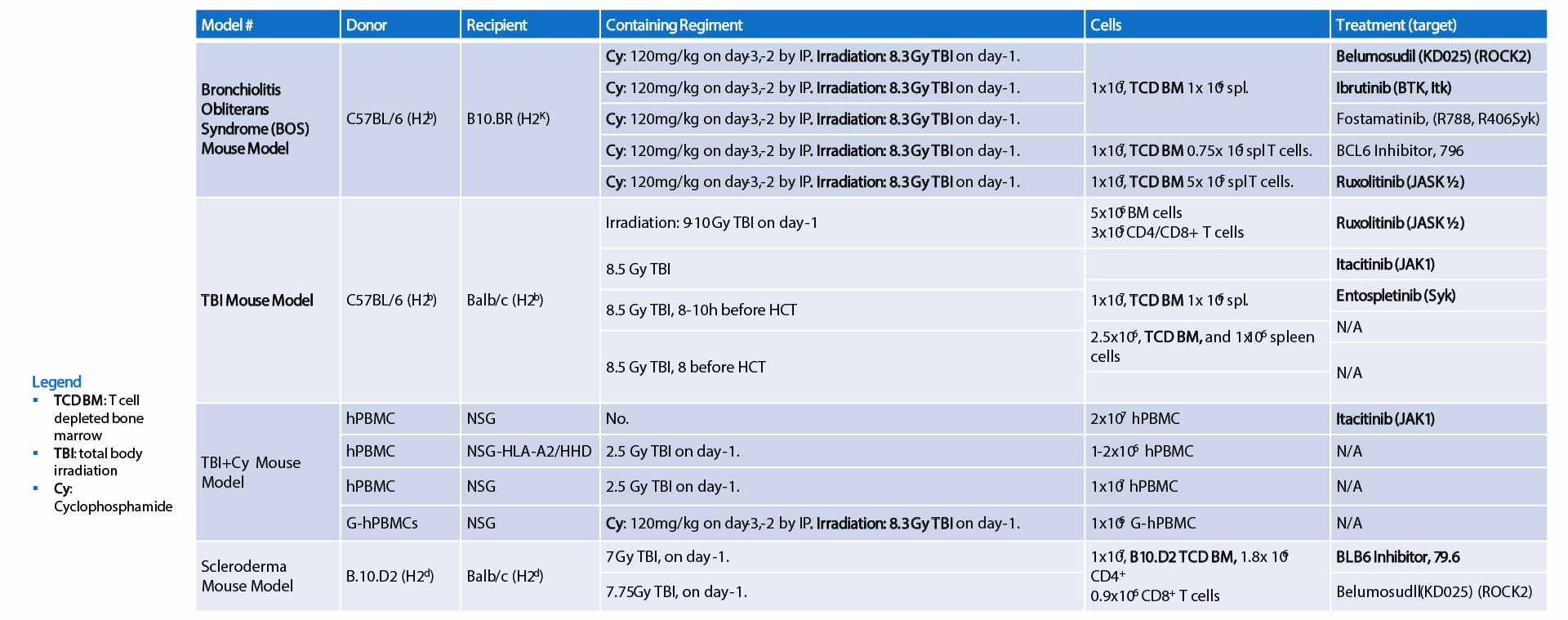
cGvHD TBI Mouse Model
Eye Score Assessment
| Eye Score | Chemosis, Eyelid Edema, Conjunctival Redness, and Tearing |
|---|---|
| 0 | none |
| 0.25-1 | mild |
| 2.25-2.0 | moderate |
| 2.25-3 | severe |
| left + right for each |
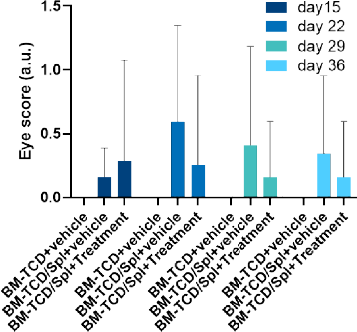
text
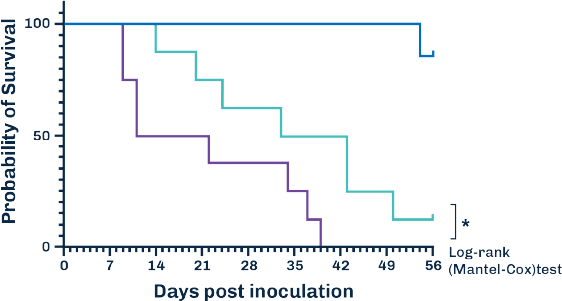
text
GvHD Scleroderma Mouse Model
Skin Score Assessment
| Normal | Assessment of Hair Loss |
|---|---|
| 0 | normal |
| 0.5 | ruffling of fur |
| 1 | area of hair loss < 1 cm2 |
| 2 | area of hair loss 1-3 cm2 |
| 3 | area of hair loss 15-30% |
| 4 | area of hair loss 30-50% |
| 5 | area of hair loss >50% |
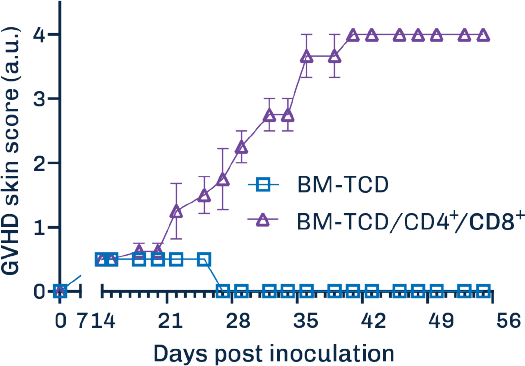
text
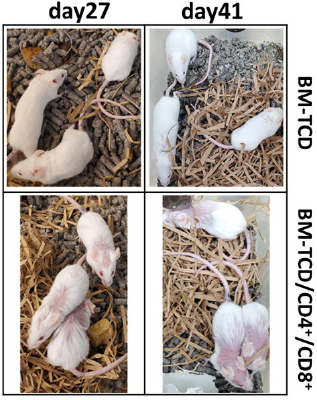
text
Empowering Immunology Research with TD2
TD2 is dedicated to advancing immunology by providing sophisticated tools to unravel the complexities of immune system behavior in GvHD and beyond. Our models empower researchers to innovate, discover, and translate findings into transformative therapies. Collaborate with TD2 to explore the frontiers of immunology and make a lasting impact on patient care.
![]()
PRECLINICAL
Models and Services
TD2’s service offering is consistently expanding and currently includes:
Model Systems:
- Syngeneic Tumor Models
- Orthotopic Tumor Models
- Patient Derived Xenograft (PDX) Models
- Humanized Mouse Models
- Diet-Induced Obesity Tumor Model
- Adoptive Cell Therapy Models
- Cell Line Derived Xenografts Models (CDX)
Bioanalytical Services:
- Flow Cytometry
- Metabolomics and Proteomics Analysis
- DMPK/ADME services
- Non-GLP Safety/Tolerability
In vivo and In vitro Characterization
- In vitro Pharmacology Assays
- In vivo Optical Imaging
- Efficacy Evaluation
Therapeutic Evaluation:
- Antibody Drug Conjugate (ADC)
- Small Molecule
- Cell Therapy
- Checkpoint Inhibitors
- mAbs
- Vaccines
- Gene Therapy
GET STARTED
Put your clinical trial in the hands of a team who believes in your research as much as you do.
Are you ready to start your preclinical trial? Partner with a collaborative oncology CRO that believes in your treatment as much as you do. Take the first step today and contact our experts.
